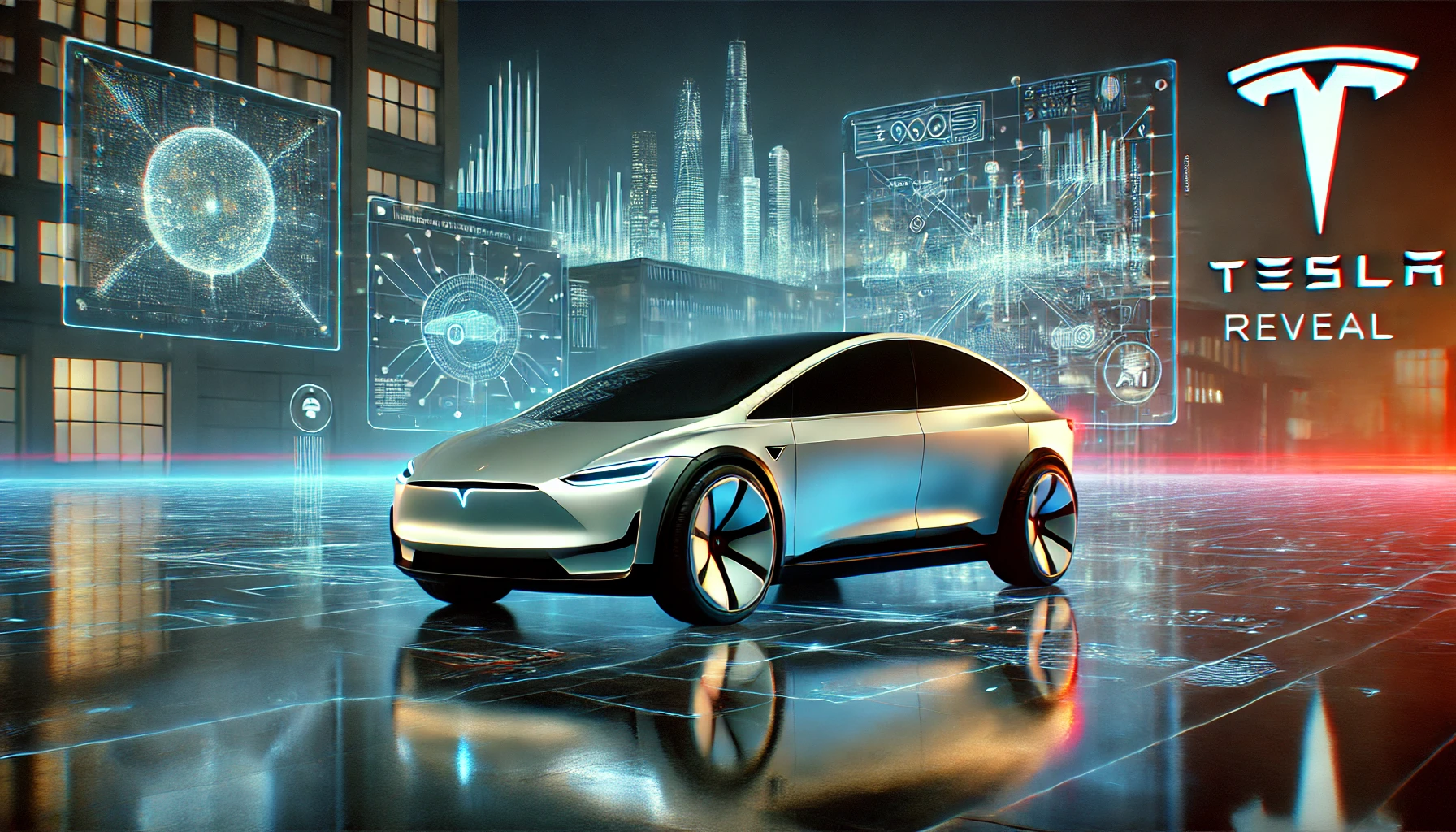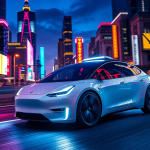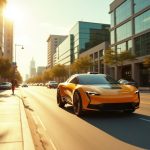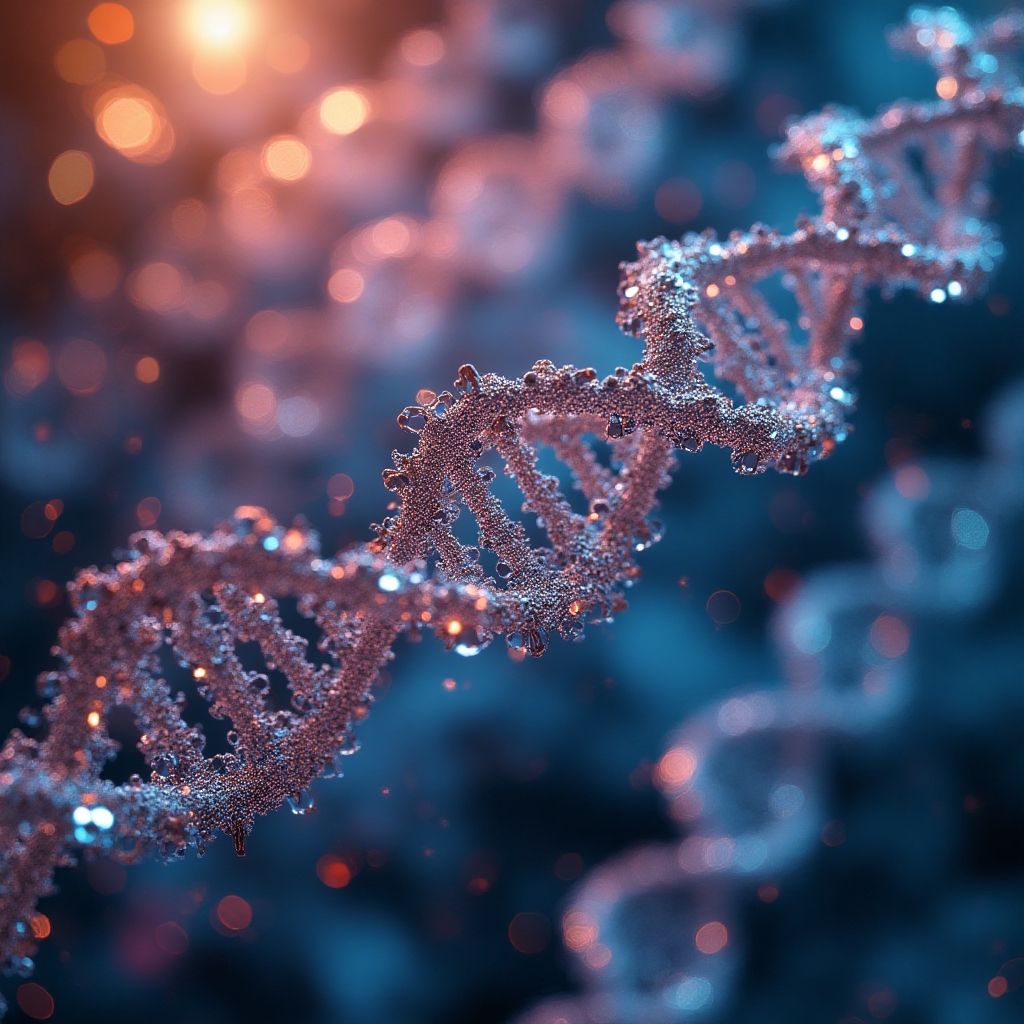Tesla is once again making headlines with the much-anticipated reveal of its Robotaxi. You’ve heard the hype, the whispers, and the endless tweets from Elon Musk teasing what’s to come, but what does this mean for the future of transportation? Is this truly the game-changer we’ve all been waiting for, or just another one of Musk’s ambitious promises that will get delayed (again) like a never-ending game of musical chairs? Spoiler alert: Probably both.
As we inch closer to Tesla’s We, Robot event in Burbank, California, excitement is building around what we can expect to see (watch it here) and—more importantly—what this could mean for Tesla’s stock, investors, and the future of autonomous driving. But there’s so much more to unpack here than just another flashy prototype. So, grab a coffee, sit back, and let's dig into every angle of the story, breaking down the tech, the promises, and the inevitable hurdles Tesla will have to clear before Robotaxis become a reality.
The Hype: What Is Tesla’s Robotaxi Anyway?
If you’ve been living under a rock (or just not glued to Twitter), here’s a quick rundown: Tesla is gearing up to reveal its first Robotaxi, also dubbed the Cybercab. This two-seater, angular, and futuristically minimalist vehicle will likely resemble a mini-version of Tesla’s Cybertruck—complete with stainless steel exteriors and probably no steering wheel or pedals.
Yes, you read that right. No steering wheel. No pedals. Just the future in all its autonomous, stainless steel glory.
But hold your electric horses—Tesla’s dream of a fully autonomous vehicle isn’t new. Elon Musk has been talking about this for years. In fact, he initially promised that all Teslas would be fully autonomous with just a software update. As of now, your Model 3 still needs a driver behind the wheel. So, how close are we, really, to a driverless future?
Expectations for the Big Event
Scheduled for 7 p.m. PT at Warner Bros. Discovery’s movie studio (because, naturally, what better place for Musk to put on a show?), the event will reveal Tesla’s vision for the future of ride-sharing, with its first Robotaxi concept in full display. Here’s what we think we’re going to see:
-
A New Prototype: Tesla is expected to unveil its first Cybercab prototype, a two-door vehicle that bears striking similarities to the Cybertruck. This isn’t surprising given Musk’s obsession with angular, unorthodox designs, and the fact that the Cybertruck has become somewhat of a symbol for Tesla’s vision of a post-car ownership future.
-
No Steering Wheel, No Pedals: In Musk’s ideal world, a car that drives itself shouldn’t need human controls. Tesla engineers reportedly pushed back on this design choice, but the boss has been firm: This is a car for the autonomous future, not a half-measure.
-
A Glimpse into Tesla's Autonomous Future: Musk has been teasing a full-blown autonomous ride-hailing app—Tesla's very own Uber-killer—ever since he announced the Robotaxi project. Could this event finally give us more than just whispers?
But don't get too excited yet. With Tesla’s track record of delays and bold claims, we might be waiting a while before these sleek, futuristic taxis are actually hitting the streets.
Tesla’s Autonomous Dreams vs. Reality
Let's be honest—Tesla has been talking a big game when it comes to autonomy. Musk once declared we'd see fully autonomous Teslas by 2020. It’s now 2024, and while Tesla’s Full Self-Driving (FSD) software has come a long way, we’re still a long way from cars driving themselves.
FSD: A Work in Progress
Tesla’s FSD software is impressive, but it still requires human oversight. It’s not the robot-on-wheels we’ve been promised. And while the tech is getting better every day, Tesla’s still facing significant hurdles:
-
Regulatory Challenges: The idea of a car without a steering wheel or pedals might be futuristic, but it doesn’t exactly line up with current motor safety standards. In fact, it could be a major stumbling block for Tesla as they try to push their Cybercab to market.
-
Safety Concerns: Autonomous vehicles are subject to intense scrutiny, and Tesla’s been no stranger to controversy when it comes to safety. Could a car without human controls really be safe in today’s unpredictable driving environments?
Investors Are Nervous
Tesla’s financials are another big question mark. The company’s profit margins have been shrinking thanks to the ramp-up in Cybertruck production and some disappointing deliveries in Q3. Throw in the fact that Tesla’s had to issue multiple recalls on its flagship vehicles—including the Cybertruck—and you can see why some investors might be biting their nails.
A new Robotaxi might be a shiny distraction, but it also means more investment in production lines, factory downtime, and plenty of other costly headaches—things that shareholders won’t love.
The Show: Why Warner Bros?
Tesla usually holds its big events at one of its own facilities, so the decision to host this reveal at a Hollywood studio is…interesting. Is this just another sign of Musk’s showmanship, or is it an attempt to turn the Robotaxi into a blockbuster?
The Warner Bros. studio offers an intriguing backdrop, with large sound stages and even a mini downtown area—perfect for showcasing the Cybercab in a controlled environment. We wouldn’t be surprised to see Musk stage a demo where the vehicle autonomously navigates these quiet, traffic-free streets.
But here’s the thing: A closed environment is a far cry from the real world. And while it’ll be impressive to see the Robotaxi zoom around Warner Bros., it won’t tell us how the vehicle performs in rush-hour traffic on the 405.
The Cybercab in Action?
Tesla’s teased an autonomous ride-hailing app before, and we expect this event to feature a demo of that system. Will we see the Cybercab in action, picking up passengers and driving them through the studio lot? Probably. Will it be ready to handle the unpredictable chaos of real-world streets? That’s a whole different story.
What About the $25K Tesla?
Beyond the Cybercab, there’s speculation that Tesla could unveil a preview of its much-anticipated $25,000 electric vehicle, which fans are calling the Model 2. This affordable EV has been in the rumor mill for years, and while Musk has hinted at its existence, we’re not holding our breath for an official reveal just yet.
The Optimus Robot: More Science Fiction?
The event’s title, We, Robot, isn’t just a nod to autonomous cars. It’s also a wink at Tesla’s humanoid robot, Optimus. If you’ve been following Tesla closely, you’ll remember Musk’s grand vision for a robot that can do…well, everything. Cooking, cleaning, caregiving—you name it. But much like the Robotaxi, the Optimus robot feels more like a concept than a concrete product.
Will we get an update on Optimus at this event? Probably. Will we see it serving coffee in your local Starbucks? Don’t count on it.
Wildcards: Uber and McDonald's in the Mix?
As we look ahead to the event, there are a couple of wildcards to keep in mind. Could Tesla announce a partnership with Uber? It’s possible. Uber has been cozying up to autonomous vehicle companies lately, and while Musk typically prefers to go it alone, a partnership with Uber could be the easiest way to commercialize Tesla’s Robotaxi service.
Then there’s McDonald’s. Yes, you read that right. The fast-food giant posted a cryptic tweet last week that had everyone speculating about a collaboration with Tesla. Could we see autonomous McDelivery bots zipping around town, delivering Big Macs without human intervention? Only time will tell, but it would definitely be one way to get some extra media attention.
What We Won’t See
Despite all the hype, there are a few things we don’t expect to see at this event:
-
A Clear Path to Commercialization: Musk loves to paint rosy pictures of a world where nobody owns cars, and we all just hail autonomous Teslas on-demand. But the reality is that commercializing a Robotaxi service is going to be a long and expensive process.
-
Fully Autonomous Vehicles: Tesla’s FSD software is impressive, but we’re still a long way from full autonomy. Don’t expect to see a truly driverless car on the streets anytime soon.
The Long Road Ahead
Tesla’s Robotaxi might be the future, but it’s not going to arrive overnight. Between regulatory hurdles, production delays, and the need for significant investment in infrastructure, we’re likely years away from seeing these vehicles on the road in any meaningful capacity.
But that’s the thing with Tesla, isn’t it? Musk’s vision of the future is always tantalizingly close but just out of reach. Whether it’s a flying car, a Mars colony, or a fully autonomous taxi fleet, Tesla is constantly pushing the envelope—and keeping us all on the edge of our seats.
Conclusion: Are You Ready for a World of Robotaxis?
The idea of a world where cars drive themselves is exciting, no doubt. But as we look ahead to Tesla’s big reveal, it’s worth asking: Are we really ready for Robotaxis? Do you trust a car with no steering wheel or pedals to navigate the chaos of modern city streets?
What are your thoughts on the future of autonomous vehicles? Is Tesla leading us into a new era of transportation, or is this just another pipe dream from Elon Musk? Let us know in the comments below—and while you’re at it, why not apply to become a permanent resident in the “Shining City on the Web” and join the iNthacity community? Like, share, and get involved in the conversation.
Disclaimer: This article may contain affiliate links. If you click on these links and make a purchase, we may receive a commission at no additional cost to you. Our recommendations and reviews are always independent and objective, aiming to provide you with the best information and resources.
Get Exclusive Stories, Photos, Art & Offers - Subscribe Today!
























Post Comment
You must be logged in to post a comment.